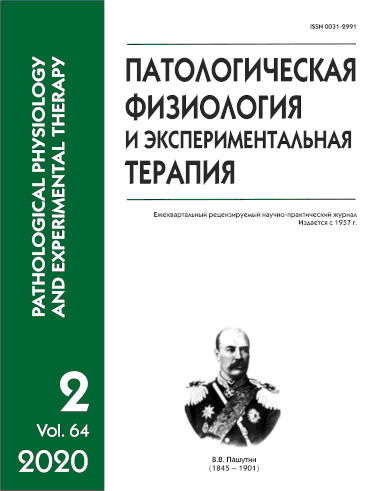Immunophenotypic characteristics of spermatogenesis in idiopathic male infertility
Abstract
In recent years, infertility has become a common complaint of approximately 8% of men of young, reproductive age in the everyday practice of urologists/andrologists. However, diagnostics and treatment of infertility are impossible without understanding the pathogenesis of spermatogenesis disorder. Aim: Evaluating the immunohistochemical aspect of spermatogenesis in the idiopathic form of male infertility. Methods: Analysis of testicular biopsy samples from patients aged 22-35 (n=53) with idiopathic male infertility. Evaluation of the hormonal status, analysis of spermogram, and pathogenetic and molecular genetic diagnostics (karyotype study and a blood test for the presence of microdeletions in the Y-chromosome AZF locus) were performed for all patients. Testicular biopsy samples from men with infertility and autoptic testicular samples from men aged 22-35 (n=10, 1-2 children in history) as a morphologic control were studied using an immunohistochemical method. Primary antibodies to Ki-67, p53, Bcl-2, caspase-9, CD117, PLAP, IGF-I, and VEGF-A were used. Results. Mitotic activity of spermatogonia in infertility (12.0±0.1%) was lower than normal (42.0±0.34%), which was associated with increased activity of caspase-9 in the focal variant of Sertoli-cellonly syndrome (72.0±0.41%) compared to normal spermatogenesis (39.5±0.33%). In infertility, levels of proapoptotic proteins (p53) were considerably higher (40.0±0.44%) than levels of anti-apoptotic proteins (Bcl-2), 1.0±0.1. Factors of gamete differentiation (CD117) were not detected in infertility while PLAP was (10.2+0.13%). In hypospermatogenesis, the IGF-I staining in spermatogonia was decreased 8.8 times (7.0±0.22%). Infertility was associated with decreased levels of VEGF, which indirectly results in activation of proapoptotic factors. Conclusion. The comprehensive analysis of pathological spermatogenesis in idiopathic male infertility suggested individual impairment of sensitivity and specificity of germ cells to biologically active substances, which provide their proliferation, differentiation, and apoptosis. The immunohistochemical morphological study of testicular biopsy samples is a required test in the diagnostic algorithm for male infertility.






